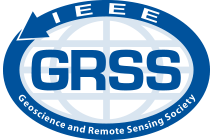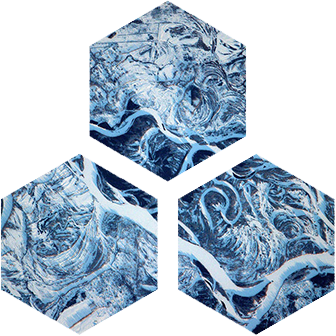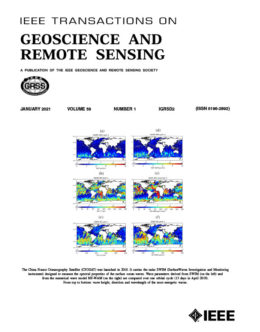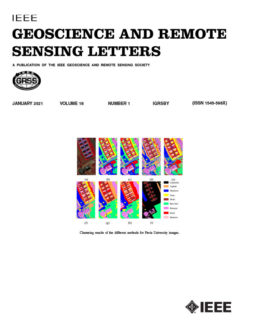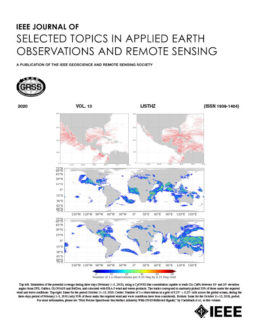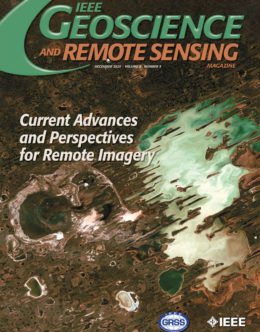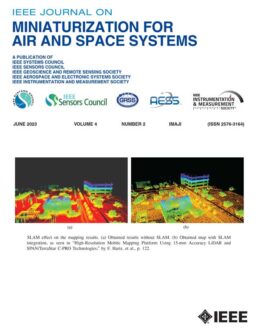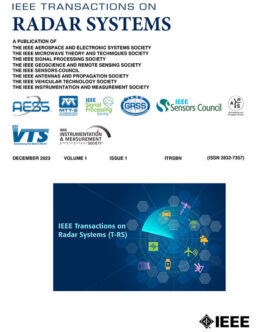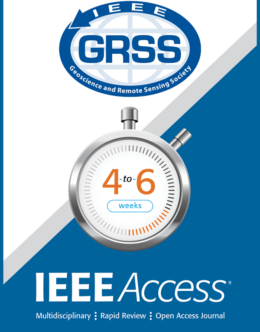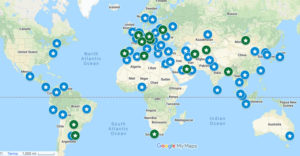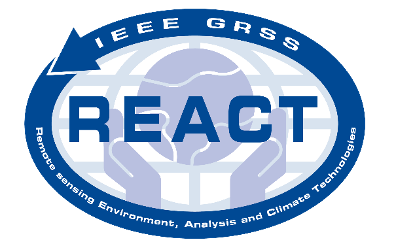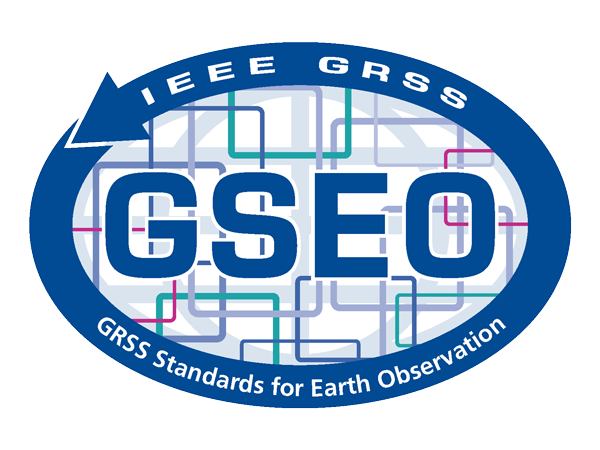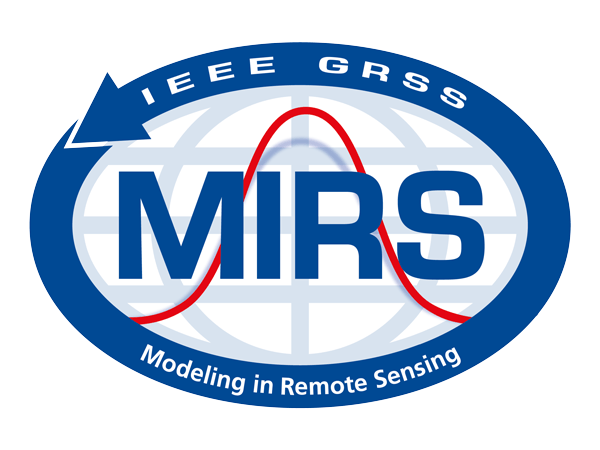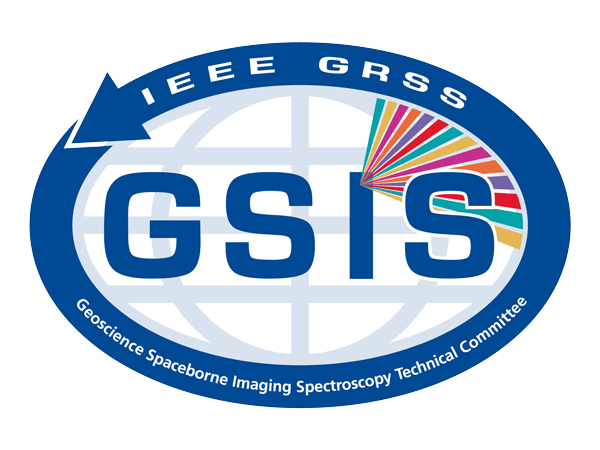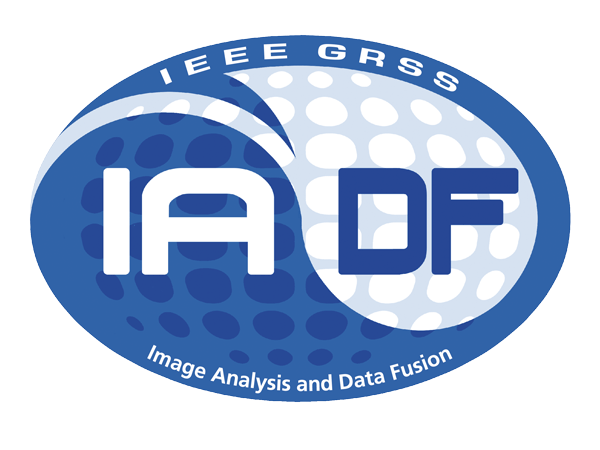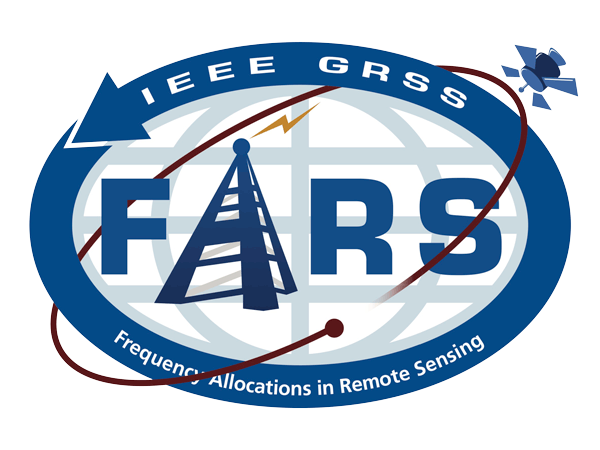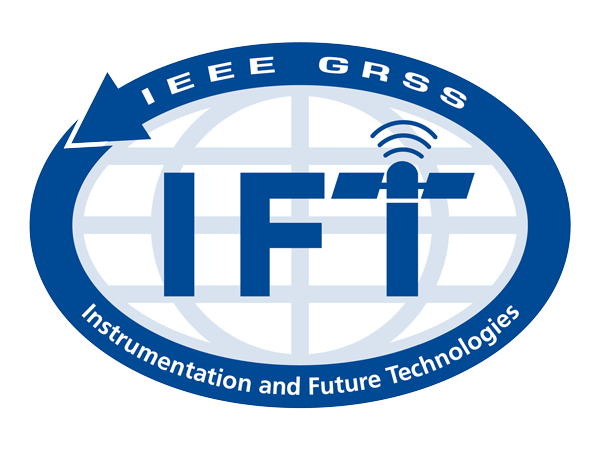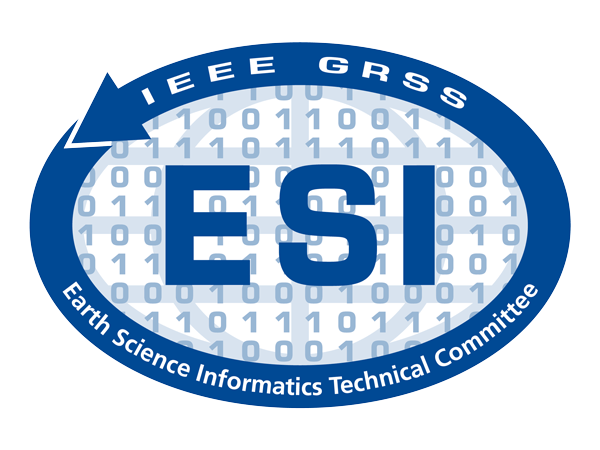History of the International Geoscience and Remote Sensing Symposia “IGARSS” and Geoscience Electronics Group Symposia
1. International Geoscience Electronics Symposia
1.1. The Formation of IEEE G-GE Symposium
The First Annual International Geoscience Electronics Symposium, sponsored by the IEEE Geoscience Electronics Group was held from April 16-18, 1969 at the Twin Bridges Marriott Hotel, Washington, D.C. Arrangements for this symposium were handled by the host, Washington G-GE Chapter. The Steering Committee Chairman of this meeting was Charles F. Getman, who was then with the U.S. Naval Oceanographic Office in Washington. This meeting turned out to be a great success, with 376 engineers and scientists in attendance. There were 63 papers presented in 13 technical sessions on topics such as earth resources surveys, oceanographic and meteorological remote sensing, earth seismology instrumentation, and environmental pollution. No digest of papers was published for this symposium, but a Special Issue composed of selected papers from this meeting was published in the October 1969 (GE-7) Transactions on Geoscience Electronics. The banquet speaker at this first symposium was Professor Paul S. Bauer. The registration fee for IEEE members was $17.00. Total receipts for the meeting were $6812 expenses were $5423.82, for a net meeting surplus of $1388.18.
The 2nd International Geoscience Electronics Symposium was held April 14 – 17, 1970 in Washington, D.C. at the Marriott Twin Bridges Motel. The General Chairman was Michael L. Sims. There were 70 papers presented in 18 sessions, and a 100-page Digest of papers was published. This successful meeting included an awards banquet on April 16, with the speaker being U.S. Senator Warren G. Magnuson. In his address, he called for the creation of a World Environment Institute to provide an international, interdisciplinary approach to global environmental problems. As a result of his suggestion, a G-GE team composed of Enrico Mercanti, Mace Miyasaki, and Ed Wolff began a survey of the world’s environmental community and possible implementation arrangements for a World Environment and Resources Council (WERC). In 1971 the G-GE obtained support from the IEEE Technical Activities Board and TAB Vice-President Harold Chestnut to hold a first exploratory meeting from the world environmental community to form the WERC. This meeting was held in Washington, D.C. on August 26-27, 1971 at the time of the IEEE G-GE 1971 Annual Symposium.
The 3rd International Geoscience Electronics Symposium was also held in Washington, August 25-27, 1971. The General Chairman was Ralph Bernstein, with the IBM Corporation. There were 47 papers published in a 78-page Digest (Call No. QE-1.I73). Unfortunately, attendance at this third meeting was only about 150, much lower than the previous two years, and substantially less than was needed for the meeting to be a financial success.
Keith Carver
1.2 G-GE Annual Symposium Overview
| Year | Location | Chair | Attendance |
| 1971 | Washington DC, USA | Ralph Bernstein | 150 attendees, 47 papers |
| 1970 | Washington DC, USA | Michael L. Sims | 70 papers |
| 1969 | Washington DC, USA | Charles F. Getman | 376 attendees, 63 papers |
2. International Geoscience and Remote Sensing Symposium
2.1 Establishing IGARSS : 1981
In 1980 President Fawwaz Ulaby spearheaded a major initiative to have the Society sponsor an annual international conference to bring together the global community of scientists and executives concerned with geoscience and remote sensing. Ulaby argued that the new symposium series, which was called the International Geoscience and Remote Sensing Symposium (IGARSS), would announce to the scientific community that GRSS could represent the interests of those involved in remote sensing, instrumentation and information processing. Furthermore, he noted, a symposium could help increase membership and make the society a leader in the growing field of remote sensing. Ulaby and Carver—who was slated to succeed Ulaby as President of GRSS in 1982–were convinced that a remote sensing symposium in the nation’s capital would be a success. The time was right; there was a huge amount of energy in NASA. The Shuttle program was just starting. So many of the new remote sensing and satellite programs were just getting started at the time. Indeed, the early 1980s were a time of tremendous advancement in the science of remote sensing. The National Aeronautics and Space Administration (NASA), the National Oceanic and Atmospherics Administration (NOAA), and the U.S. Geological Survey (USGS) were spearheading remote sensing initiatives in the United States, and a host of other international agencies, including CCRS in Canada, ESA in Europe and NASDA in Japan were making significant contributions to the field of remote sensing. The Earth Resources Technology Satellite (ERTS) was focusing new interest on advances in solid-earth sensing, atmospheric and oceanographic remote sensing and new sensor systems.
When IGARSS‘81 did kick off at the Twin Bridges Marriott in Washington, D.C. the end of that first week in June. There were 416 in attendance, with 16 countries represented. A comprehensive 2-volume Proceedings was published, with 1457 pages. The first symposium of the modern era of GRSS was a resounding success. IGARSS’81 was well attended by international members of the Society, and the symposium offered sessions in all technical areas of interest.
The symposium received strong support from the U.S. scientific community. The keynote speaker at the banquet was U.S. Senator Harrison Schmitt of New Mexico. Schmitt’s appearance at IGARSS’81 was emblematic of the nation’s love affair with space travel in the early 1980s. Schmitt, a geologist, was the 12th and last of the Apollo Astronauts and one of the last Americans to walk on the surface of the moon.
Participants and GRSS members who had been unable to attend eagerly snapped up copies of the two-volume Proceedings of nearly 1460 pages that were published in late summer of 1981. For Ulaby, Carver and AdCom, the success of IGARSS’81 presented a solid foundation upon which to build for the future. The presence of delegates from 16 countries reaffirmed Ulaby’s feeling that GRSS should truly become an international organization. Ulaby had long argued that the parent IEEE was a trans-national organization with members from around the world. If GRSS truly wanted to be a global organization, it needed to hold its meetings and symposia overseas.
2.2 IGARSS’82 and Beyond
Ulaby’s argument was buttressed by the presence at IGARSS’81 of three key individuals from what at the time was the Federal Republic of Germany, or West Germany. Alois Sieber, Wolfgang Keydel and Franz Schlude were all associated in 1981 with the German Aerospace Establishment (DLR). They were joined by colleagues Phil Hartl of the University of Berlin and Johannes Bodechtel of the University of Munich.
The West German members proposed to host IGARSS’82 in Munich in June 1982. Bodechtel offered his services as General Chairman of the symposium, and the group assured AdCom that critical committee assignments had already been made. The West German Embassy hosted a well-attended reception at the National Air and Space Museum during IGARSS’81. At that reception just across Independence Avenue from NASA headquarters, the West German Charge d’Affaires for Science and Technology announced that IGARSS’82 would, in fact, be hosted by the Federal Republic of Germany in the old capital city of Bavaria, Munich.
IGARSS’82 was another resounding success, and GRSS was on the road to continued growth in the years ahead. The success of the symposium in Munich created impetus for a formal proposal that would shape the history of the Society over the next quarter century. “We came up with the idea of holding IGARSS in North America in odd-numbered years and overseas during even-numbered years,” explained Keith Carver. “We knew that the Europeans were aware of the Remote Sensing Society, but so many of them at the time were in the Photogrammetry Society. But so many of the remote sensing and satellite programs both here and abroad were just getting started at the time.”
IGARSS’83 came back to the United States, to the San Francisco Hilton in late August, and went to the European Parliament building in Strasbourg, France, exactly a year later for IGARSS’84. The rest of the 1980s saw the Society’s symposium switch back and forth between the United States and Europe – IGARSS’85 held at the University of Massachusetts at Amherst, IGARSS’86 held at the University of Zurich-Irchel in Zurich, Switzerland, IGARSS’87 held at The University of Michigan at Ann Arbor, and IGARSS’88held in the medieval city of Edinburgh, Scotland.
IGARSS departed from the odd-even system in 1989 when IGARSS’89 was held in Vancouver, British Columbia. Although in North America, U.S. members argued for a U.S. site in 1990, with AdCom acceding to the request. IGARSS’90 was held on the campus of the University of Maryland at College Park in late May amidst a spectacular display of spring blossoms. The symposium resumed its overseas location in early June 1991 when delegates enjoyed a week in Helsinki, Finland. The symposium returned to the United States in 1992, to Houston, Texas, and made its first foray to Asia when IGARSS’93 was held in Tokyo, Japan in late May.
The symposia during the 1980s established GRSS as the voice of remote sensing in the global scientific community. All were financially successful, with average attendance between 350 and 400 people.
Attendance grew dramatically with more than 1.000 people registered for IGARSS’89 in Vancouver and averaged close to 800 attendees each year between 1990 and 1995. This growth in attendance also brought about a significant venue shift, moving the symposia from the typical university setting to a hotel or convention center venue beginning in 1995 and continuing through the present time.
Fawwaz Ulaby
2.3 List of IGARSS Symposia
| Year | Location | Chair(s) | Technical Chair(s) |
| 1981 | Washington DC | Fawwaz Ulaby | Keith Carver |
| 1982 | Munich | Johann Bodechtel | Philip Hartl |
| 1983 | San Francisco | Keith Carver | Don G. Rea |
| 1984 | Strasbourg | Preben Gudmandsen | |
| 1985 | Amherst | Robert McIntosh | Calvin Swift |
| 1986 | Zurich | Harold Haefner | Klaus Itten |
| 1987 | Ann Arbor | Fawwaz Ulaby | Keith Carver |
| 1988 | Edinburgh | Don D. Hardy | |
| 1989 | Vancouver | John S. MacDonald | Jim Gower |
| 1990 | College Park | Vincent Salomonson | Jim Smith |
| 1991 | Helsinki | Martti Hallikainen | Martti Tiuri |
| 1992 | Houston | Andrew Blanchard | Adrian Fung, Alois Sieber |
| 1993 | Tokyo | Mikio Takagi | Sadao Fujimura |
| 1994 | Pasadena | JoBea Way, Dan McLeese | Eni Njoku |
| 1995 | Florence | Paolo Pampaloni | Piero Burscaglioni |
| 1996 | Lincoln | Ram Narayan | Robert McIntosh, Calvin Swift |
| 1997 | Singapore | H. Lim | Tat Soo Yeo, et. al. |
| 1998 | Seattle | Leung Tsang | Yasuo Kuga, Dale Winebrenner |
| 1999 | Hamburg | Werner Alpers | Richard Bamler, R. Winter |
| 2000 | Honolulu | Andrew Blanchard, David Goodenough | Albin Gasiewski, Karen St. Germain |
| 2001 | Sydney | Anthony Milne | John Richards, M. Lewis |
| 2002 | Toronto | Ellsworth LeDrew | David Goodenough, Tom Lukowski |
| 2003 | Toulouse | Didier Massonnet | Jean Claude Souyris |
| 2004 | Anchorage | Verne Kaupp | Craig Dobson, Curt Davis, Tom Lukowski |
| 2005 | Seoul | Wooil Moon | S.H. Lee, William Emery |
| 2006 | Denver | Albin Gasiewski, V. Chandrasekar | G. Wick, William Emery |
| 2007 | Barcelona | Ignasi Corbella | Adriano Camps |
| 2008 | Boston | John Kerekes, Eric Miller | Dara Entekhabi, Steven Reising |
| 2009 | Cape Town | Harold Annegarn | Michael Inggs, Roger King |
| 2010 | Honolulu | Paul Smits, Karen St. Germain | David Kunkee, Paolo Gamba |
| 2011 | Vancouver | Motoyoki Sato | Yoshio Yamaguchi, Ya-Qiu Jin |
| 2012 | Munich | Alberto Moreira, Yves-Louis Desnos | Irena Hajnsek, Helmut Rott |
| 2013 | Melbourne | Peter Woodgate, Simon Jones | Clive Fraser, Jeff Walker, Mark Williams |
| 2014 | Quebec | Monique Bernier | Josée Lévesque, Jean-Marc Garneau, Ellsworth LeDrew |
| 2015 | Milan | Vito Pascazio, Sebastiano B. Serpico | Lorenzo Bruzzone, Paolo Gamba |
| 2016 | Beijing | Ji Wu, Ya-Qiu Jin | Jiancheng Shi, Huadong Guo, Kun-Shan Chen |
| 2017 | Fort Worth | Saibun Tjuatja, David Kunkee | Joel Johnson and Kunshan Chen |
| 2018 | Valencia | José Moreno | José Sobrino and Gustau Camps-Valls |
| 2019 | Yokohama | Akira Hirose | Irena Hajnsek, Akira Iwasaki, Hiroyoshi Yamada |
| 2020 | Virtual | Bill Emery, Adriano Camps | Jasmeet Judge, Paolo Gamba, Jiancheng Shi |
| 2021 | Brussels | Ramon Hanssen, Joost Vandenabeele | Michal Shimoni, Andrew Skidmore, Sindy Sterckx, Devis Tuiai |
| 2022 | Kuala Lumpur | Hean Teik Chuah | Hong Tat Ewe |
| 2023 | Pasadena | Sidharth Misra, Shannon Brown | David Kunkee, Rashmi Shah |
